We’d spent 20+ years clambering over Nature’s crevice gardens, had we only known it. The natural rock formations below near our former summer home on Ile d’Orléans in the St. Lawrence River near Québec City held exactly the eroded vertical spaces that crevice gardens try to mimic. As they were also naturally photogenic, I have pictures to show you, taken long before I knew what a crevice garden was.
Now, crevice gardens appear to be a thing. While I haven’t got my hands on a copy of it, I see the new Timber Press book Rock Gardening: Reimagining a Classic Style by Joseph Tychonievich features a crevice garden right on the cover. You know what that means: Trend.
Clapping eyes on the Jardin de Crevasses in the Alpine Garden at Montreal Botanical Garden in Spring 2014, I fell in love. The Jardin was created by two Czech leaders in crevice garden design, Josef Halda in 2002 and Zdenek Zvolanek in 2004. (This links you to a Vimeo of Josef Halda building a small-scale crevice garden.)
The picture with the stone bench, leading into this post, was taken on a return visit to Montreal this September.

Click on the images below to embiggen the slideshow, which should allow you to read the description on the interpretive signage. If you want to read what crevice gardening is all about, have a look at this pretty comprehensive Digger magazine article by Danger Garden gal Loree Bohl.
Having grown columbines (Aquilegia) in amended soil in my shade garden, I confess to being a wee bit surprised at seeing these growing so lustily in gravel and full sun. But then I thought about it. The words “alpine columbine” came back to me, triggering one of those Duuuhhh! moments. Of course, alpine plants would grow in alpine conditions like this.
Those (ahem!) “short-lived” columbines are a lot tougher than I was giving them credit for. Maybe I’ve been killing them with kindness. You can do that to a plant.

The rocks and crevices in the Jardin de Crevasses have an east-west orientation. Love the way the flat paths repeat this pattern as they weave through the space, and raised edges create interesting banks for cascading plants.
Later that year, at the Garden Bloggers Fling in Portland, OR, I saw another version of a crevice garden, this time with succulents. The garden of John Kuzma, designed by Cistus Nursery, it smoothly integrates the crevice bed into the overall garden design. This is an approach you might consider, too.
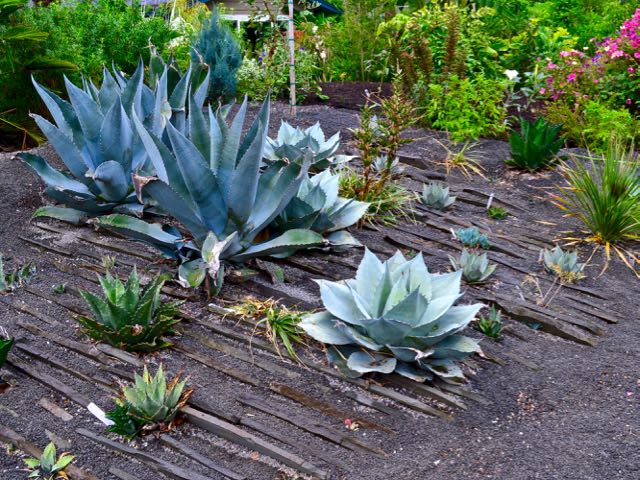
What a thrill when back in Toronto, I spotted the crevice garden outside the Gardiner Museum of ceramic art this spring. Oh, look, it’s a crevice garden! I was able to tell my startled companions. While they didn’t quite share my glee, they kindly waited while I tried to photograph it in dimming light. As they are often kind enough to do.
I’ve learned since that the Gardiner crevice garden was created by Canadian designer Neil Turnbull, and the idea of a rock garden – especially a novel one like this – is perfectly thematic for a museum celebrating works in clay.
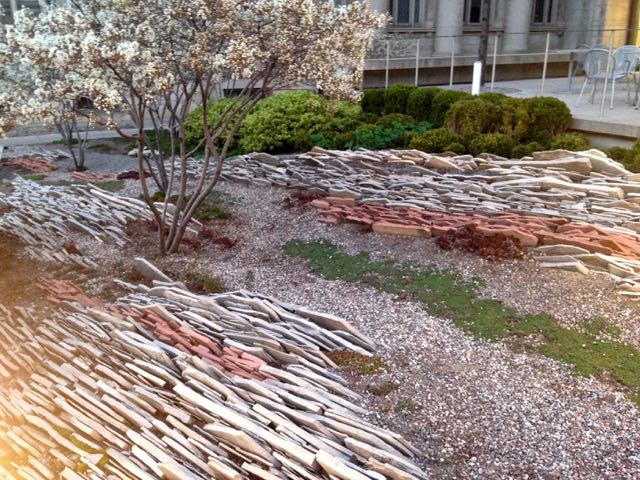
Crevice gardens don’t all have to be vertical. My research suggests that really anything goes. As you can see below, Nature agrees. At the bottom left, tiny ferns cling to cracks in an Irish wall – and as Canadian dry-stone expert John-Shaw Rimmington says, “A crevice garden is basically a dry stone wall laying on its side.” At the bottom right, a small front garden in Scarborough, ON, shows how simple a horizontal crevice garden can be.
I’m thinking about crevices now. Are you?
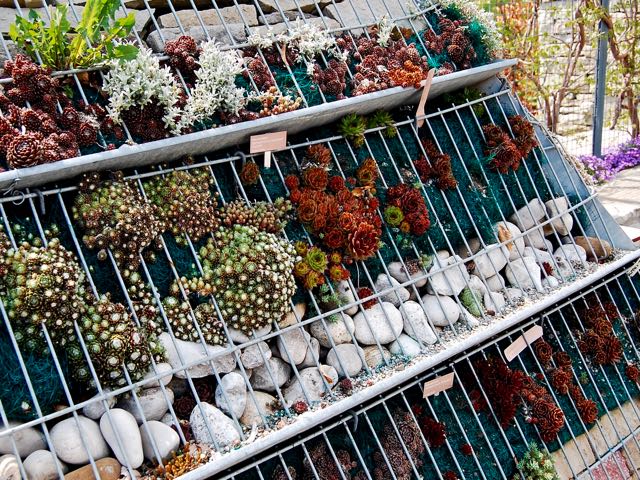
UPDATE: A reader has alerted us to the Ontario Rock Garden & Hardy Plant Society‘s upcoming presentation on crevice gardens, on Feb. 12 *19*, 2017, 1 to 4 pm at the Toronto Botanical Garden. The speaker is Kenton Seth of Paintbrush Gardens in Colorado. Great stuff on his website! The ORG&HPS website says, “Non-members welcome. No admission.” Now that’s an offer you can’t refuse!

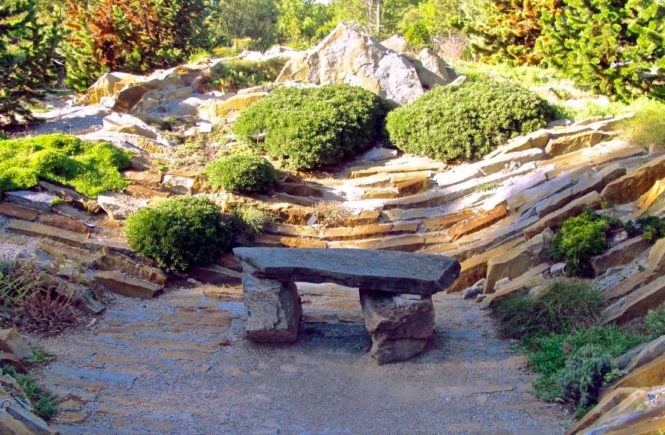
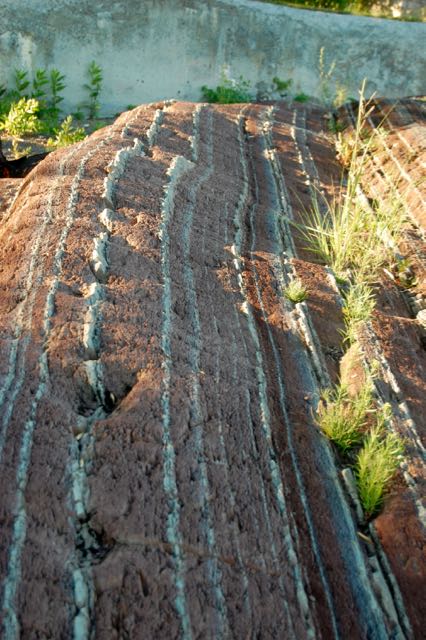
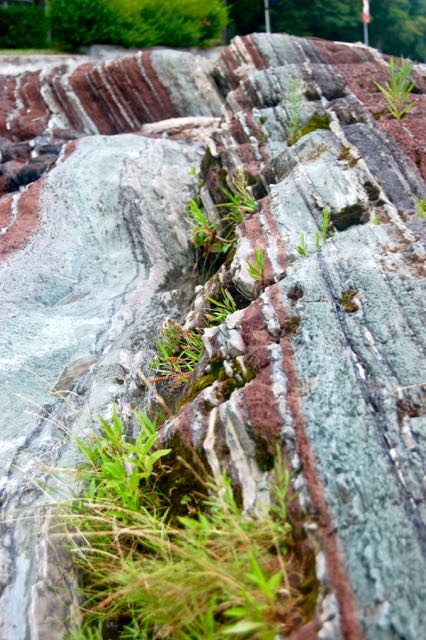
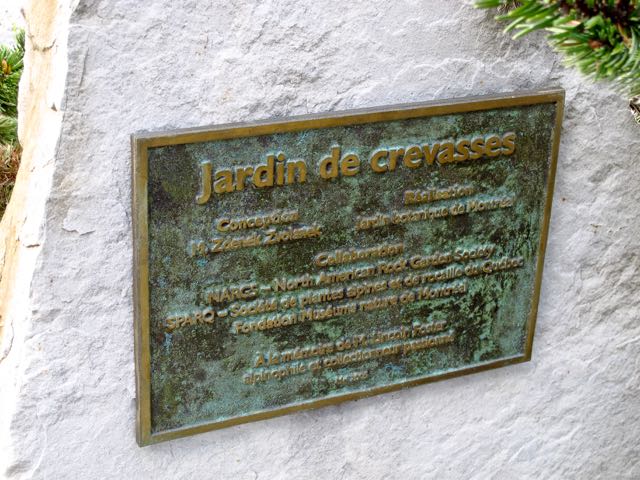
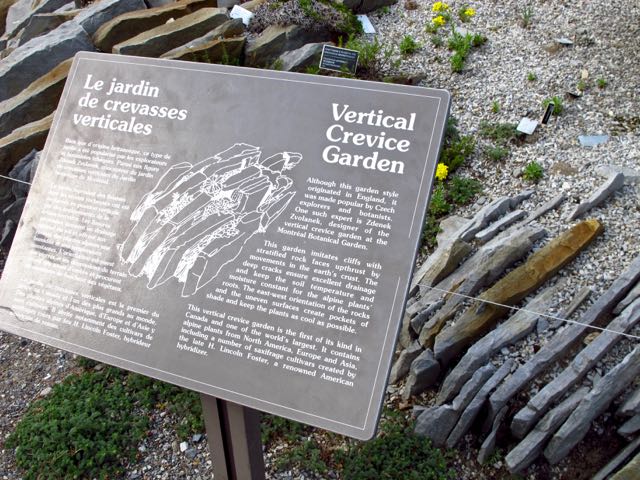
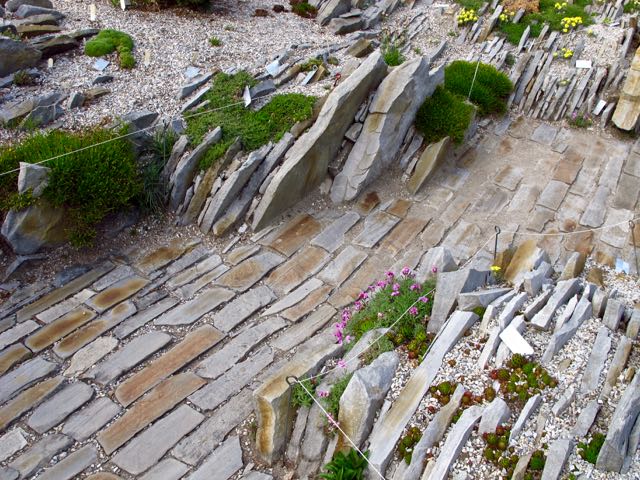
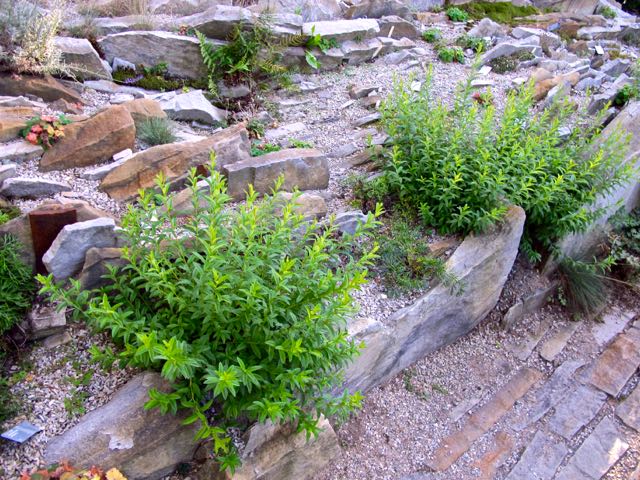
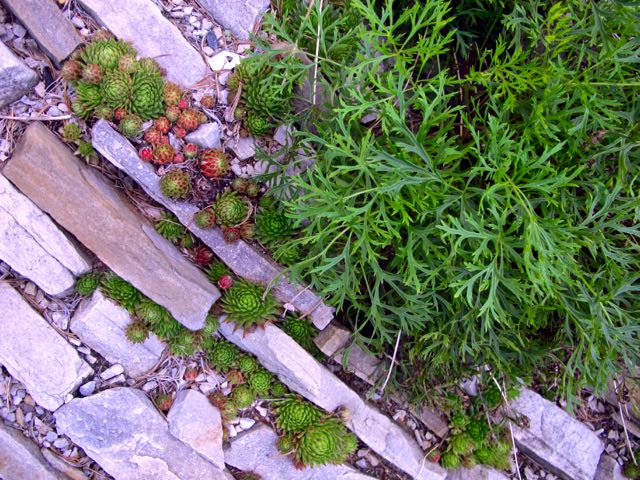
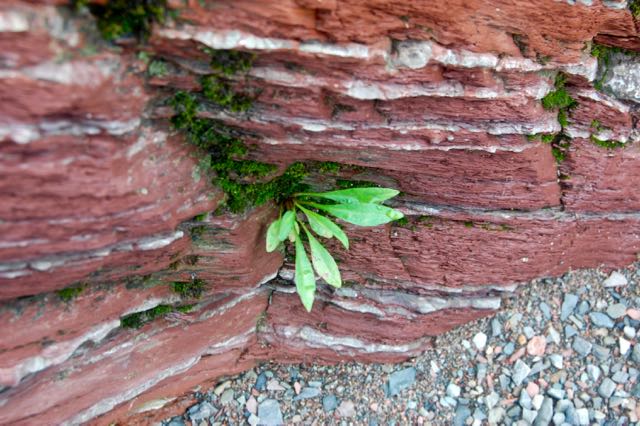
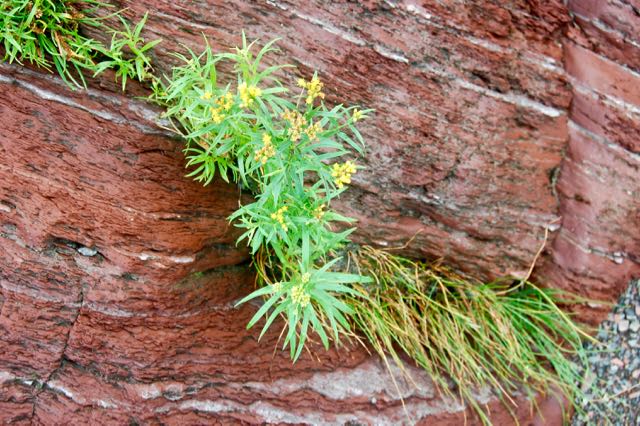
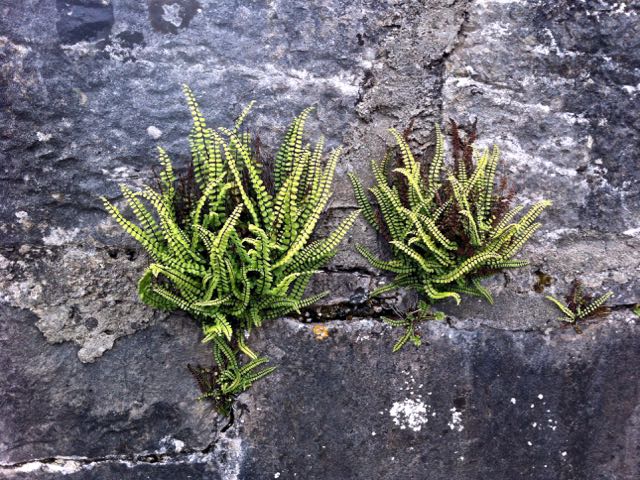
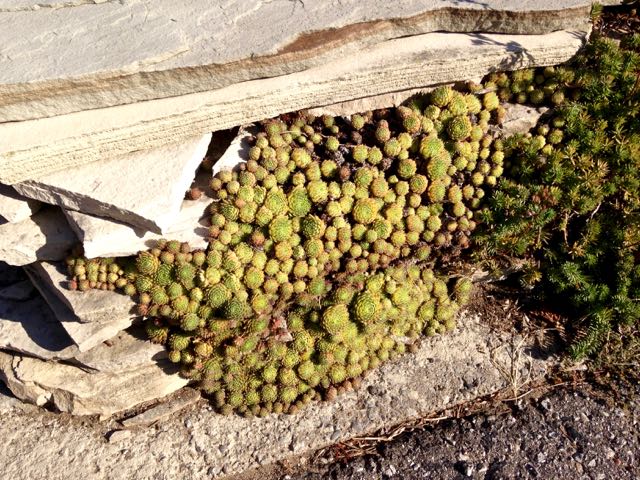
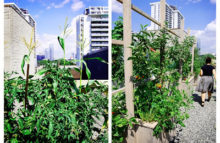
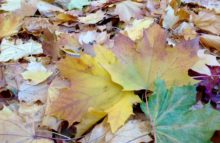

13 comments
Thank you for mentioning the crevice garden that i designed and installed at the entrance to the Gardiner Museum in Toronto. To me it seemed like a perfect fit in this location. I have received more complements about this garden than any of the public gardens that I have done over more than 40 years in the garden making busines, and these comments were all positive. The garden has frequently been referred to as an art installation, not just a garden. Kelvin Browne, Executive Director of the Gardiner Museum is thrilled with the way the garden has caught the attention of so many visitors. During the installation my staff spent a considerable amount of their time answering questions from visitors and people just passing by.
You’re quite welcome, Neil. I love it! Simple yet dramatic. Can’t wait to see how the botanical bits do over time.
I remember the Toronto Botanical Garden’s creative take on it! I loved that, and I’d never seen anything like it before. Crevice gardens are fascinating, as are plants that thrive in those conditions. Shirley at Rock-Oak-Deer (http://bit.ly/2h0QXjn) in Texas has one, and I’ve enjoyed following her progress with it over the years. Great post!
Thanks for the introduction, Beth. I’ve skipped over to Shirley’s site to have a look.
When I was visiting France this spring I loved seeing plants thriving in stone walls, fences & buildings. I think one of the plants I saw was a blooming poppy !
Yes, they really seem to have the right environment in Europe for plants to thrive in unexpected crevices, don’t they? The closest my own garden comes to that at the moment are the cracks between the house and the driveway asphalt where Corydalis self-seeds quite willingly. In truth, it’s the cracks between the shared driveway and our *neighbour’s* house. But I get to enjoy them just the same. That combination between cool roots and moisture does the trick.
What a great post. I especially appreciate the heads up about Joseph T’s new book. I met him at the Garden Blogger’s Fling in Seattle and was so impressed. I also occasionally run into him online. but this gave me a big bite of what he is up to. I loved seeing the crevice gardens, and will watch for them. I doubt I would be able to pull one off in my very wet garden but I love the idea of plants growing in the rock.
Glad you liked it, Pat. I’m hoping to get my hands on a copy of Joseph’s book soon. I have a couple of small problem areas in my garden that might be helped by a crevice garden approach. And, really, it might be an ideal way for you to raise an area up above your wet spots, creating sharper drainage. I have another post brewing about scree gardens, which can have a similar effect.
Some great inspiration you’ve posted. There are so many ways to make a crevice garden and each new one I see gives me more ideas. Thanks to Beth for sending you my way so I could find my way here.
Interesting to note the book blurb for Rock Gardening mentions extended drought in the American West which was the reason I created one in my own garden.
Might the crevise garden talk by the org&hps be on the 19th rather than the 12th? According to my org&hps January newsletter.
Hi, Barry – it would be worth checking with a real person, which I’ve just done. Their website says the 19th, and so does the announcement on the ORG&HPS Facebook page. Obviously, one of these dates is incorrect. I’ll report back what they say.
Further to my comment, I’ve queried on their Facebook page and even emailed the presenter. The only reply refers me to their website, which gives Feb. 19th as the date…
Okay, the presenter Kenton Seth has written me back and confirms that Feb. 19th is the date.